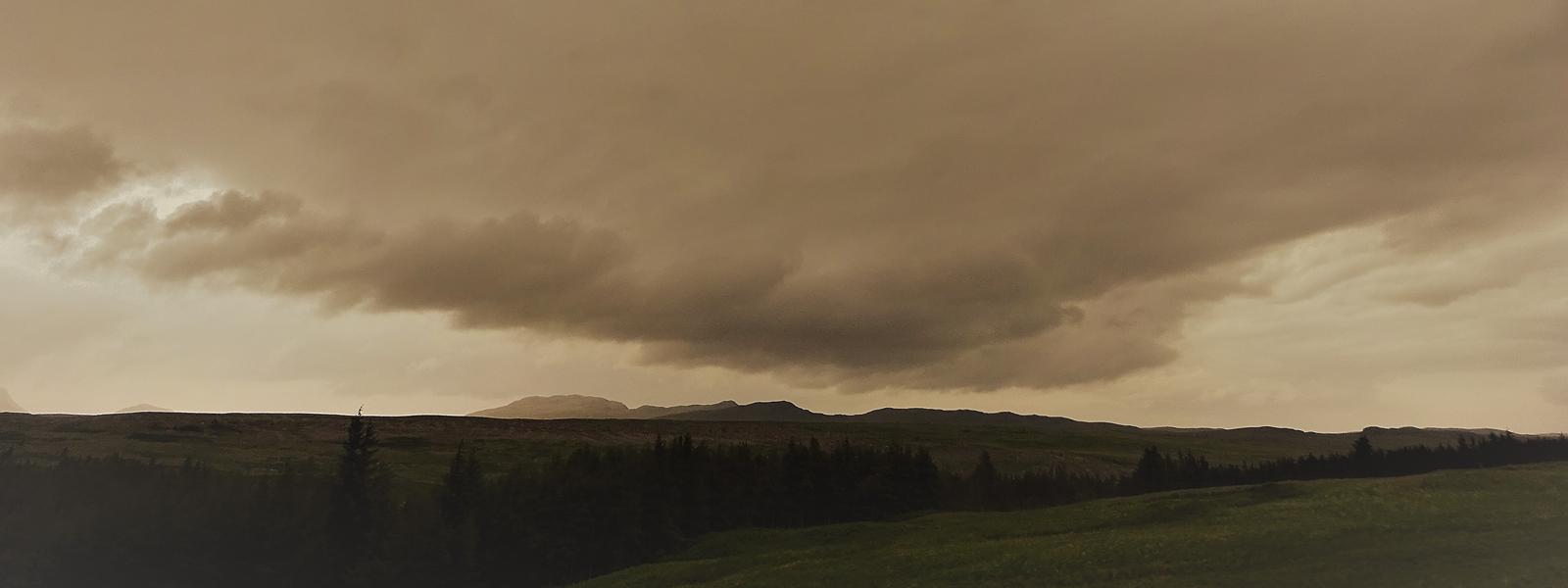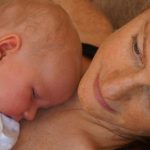Missing the sign for Rosal, we drove far up the road on the wrong side of the River Naver before we turned and retraced our journey back over the bridge at Syre and found the place marked on the map.
Hearing of the abandoned village—I’d thought of ghost towns and wooden buildings, tumbleweed, sand. But we are in Sutherland in the north of Scotland, this is a land of stone and water, and this village was not abandoned but purposefully cleared.
We park at the end of a forestry track and are immediately moved on by someone from a nearby house. Is he a guardian or merely territorial? He is out washing his truck, and watches us until we move on in the direction he pointed at. Later I wonder if he skewed the signs.
Slowly we bump up the rough track dodging potholes. Grass and weeds scrape the belly of the car. There is an empty campervan in the parking area its curtains are closed. We don’t see a soul the whole time we are there.
We take the path into the pine woods, it undulates and climbs. At one point we can see the river and beyond it the road we had mistakenly driven along earlier. We emerge into the open again at the foot of a grassy hillside.
It is quiet here. There is wool and sheep shit everywhere, but we see no sheep. There is the sky, thistles, grass, and the ridge of Ben Loyal in the distance until the clouds come down on us, as if Rosal, after showing us how beautiful a place to live it could be, is telling us of its pain.
All that’s left are bracelets of grey stones, laced with fleece, lichen and moss. We sit, way down in the lee of one of these stone circles, sheltered from the wind and rain and imagine ourselves in the corner of a room in this ruined home. People here lived as families, grew and stored crops, kept chickens and animals. They drank from the river down in the valley, raised animals on the lush grass.
Two hundred years ago the people who lived here were evicted. Here there are the remains of over 70 buildings, 19 of which were dwelling houses. The site was excavated in the 1960s by the archaeologist Horace Fairhurst. Around the site there is a string of chattering information boards made of weathering wood that already has grass and moss growing on it.
From 1814 to 1816 the tenants of Rosal were forced by the Sutherland Estate to leave their homes here to make way for the more lucrative sheep farming. These people were moved to nearer the coast, to Bettyhill, and Caithness, some later emigrated to North America.
The drizzle and shifting cloud suits our mood as we walk back to our car, saturated and meditative of money, power and ownership, and how lives can be altered and by whom.
…
Biography
F. E. Clark lives in Scotland where she paints and writes, and takes much inspiration from the colours, texture, and history of the magical landscape around her. Website: feclarkart.com | Twitter: @feclarkart
Image: F. E. Clark





